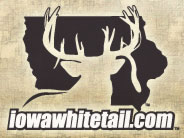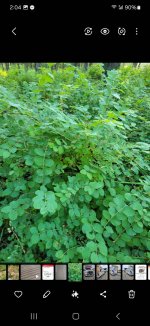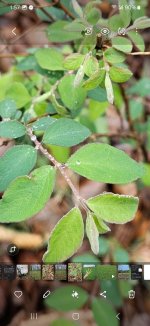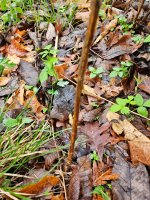

You are using an out of date browser. It may not display this or other websites correctly.
You should upgrade or use an alternative browser.
You should upgrade or use an alternative browser.
Steve-O
World Member
The plant in the image is likely a species of Symphoricarpos, commonly known as snowberry or coralberry. Several species within this genus share similar leaf characteristics, making it challenging to pinpoint the exact species without additional information such as the presence of flowers or berries.
Pretty sure my farm in KS is covered up with this too. Guess they call it buckbrush there. Doesn't get real tall like bush honesuckle so I am being told to leave it be. I guess the deer love it? That was a couple guys opinions in KS.I looked it up after your post and verified it's coralberry..It gets the red berries. Parts of my farm are covered with it..I guess I need to spray or burn next winter ..
Can anyone confirm or deny this?
This is funny…. I’ve called that coralberry FOREVER. Never called it buckbrush. Which, I Spose it is after reading!!!! I’ve always ignored it and deer browse on it a lot. Learn something new all the time- if dudes say “buckbrush” - Spose this is what they referring to? I have never treated the stuff but I also don’t see it so intense that I feel like I needed to. Hmmmm
Bassattackr
Well-Known Member
May not have deer value, but I'd be hesitant to remove natives. Part of a balanced ecosystem..
Coralberry (Symphoricarpos orbiculatus) offers significant wildlife value, providing both food and shelter for various species, especially during winter months when other food sources may be scarce. Its dense growth habit creates thickets that serve as cover and nesting sites for birds and small mammals. The vibrant berries also attract birds and other wildlife, making it a valuable addition to gardens and landscapes that support biodiversity.
Food Source:
Coralberry (Symphoricarpos orbiculatus) offers significant wildlife value, providing both food and shelter for various species, especially during winter months when other food sources may be scarce. Its dense growth habit creates thickets that serve as cover and nesting sites for birds and small mammals. The vibrant berries also attract birds and other wildlife, making it a valuable addition to gardens and landscapes that support biodiversity.
Food Source:
- Berries:
The red or pink berries are a readily available food source for songbirds, grouse, quail, and other wildlife, particularly during the fall and winter.
- Nectar:
The flowers provide nectar for bees, wasps, and flies, supporting pollinators.
- Twigs and Leaves:
While the leaves and twigs are less palatable than the berries, they can be browsed by deer and other browsers, especially in winter.
- Thickets:
The dense, branching habit of coralberry creates thickets that offer nesting and escape cover for birds, small mammals, and other wildlife.
- Shelter from Predators:
The dense foliage provides refuge from predators, making it a safe haven for many species.
- Erosion Control:
Its extensive root system helps stabilize the soil, preventing erosion and creating a more stable environment for wildlife.
In northern MO it is all over almost every timbered area. I have watched deer eat this for 20-30 minutes while there was clover and soybeans right next to it. I think deer also love it because it provides some bedding cover to hide in in the timber.
I have known it as buck brush since I was a kid 50 some years ago.
I have known it as buck brush since I was a kid 50 some years ago.
T_Max
PMA Member
I'm going on 42 years in rural Kansas and I know that as buckbrush. What kind of weirdo calls it coralberry... 
 I always guessed it was called that because bucks like it. They do use it, but as was mentioned earlier we have it everywhere so its hard to tell if the use is heavy or not.
I always guessed it was called that because bucks like it. They do use it, but as was mentioned earlier we have it everywhere so its hard to tell if the use is heavy or not.




